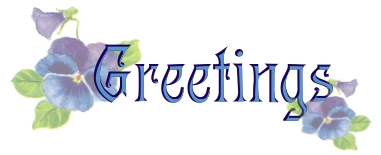
Traditional Polish Foods Of Easter; And Their Meanings!

You will find 2 lists of foods on this page: Easter basket food meanings, and also some Polish Easter foods made easy for anyone to serve!
Foods:
PACKAGE MIX EASTER SOUP, (zur lub bialy barszcz blyskawiczny) ~ Prepare instant zur or bialy barszcz (for instance: Winiary or Knorr brand - available at Polish delis) according to directions on package. Serve over sliced hard-cooked eggs. ;
EGGS IN MAYONNAISE, (jaja na twardo w majonezie) ~ Top hard-cooked egg halves on lettuce-lined platter with a dollop of mayonnaise. Garnish each dollop with some finely chopped chives and/or dill. ;
COLD SMOKED-MEAT PLATTER (pólmisek wedlin) ~ Artistically arrange thin slices of imported Polish canned ham (and/or other boiled or baked ham), Polish canned pork loin, Polish canned Canadian bacon, krakowska (sausage), etc. Trim edge of platter with thin rounds of cooked fresh kielbasa, smoked kielbasa, or hunter's sausage. Decorate platter with sprigs of parsley, radish roses, pickled mushrooms, gherkins, and/or bell-pepper rings or strips.;
EASY EASTER SALAD (latwa salatka wielkanocna) ~ In a salad bowl, combine 2 c diced cooked potatoes, 1 c drained canned navy beans, 1 c drained canned peas & carrots, 2 peeled, cored, diced apples, 3 diced dill pickles, and 2 diced onions. Sprinkle with lemon juice, salt & pepper, and lace with just enough mayonnaise to coat the ingredients. Chill and let stand, covered, overnight before serving. ;
PAN-FRIED KIELBASA (kielbasa podsmasana) ~ Cut fresh kielbasa, cooked the day before and refrigerated overnight, into 3" or 4" servings. Place in lightly buttered or oiled skillet and brown on all sides until heated through. Serve hot with cwikla (below). ;
EASY BEETS & HORSERADISH RELISH (cwikla najlatwejsza) ~ Combine 2 c coarsely grated, canned, drained pickled beets with 2-3 T prepared horseradish, and 1 c apple sauce. Season with salt, pepper, ground caraway, sugar, and vinegar to taste. Cover and chill overnight.
WAFER-TYPE PLUM MAZUREK (mazurek cliwkowy na oplatku) ~ Thinly spread an oplatek-type wafer (normally used for ritual sharing on Christmas Eve) with powidla (Polish plum butter). Cover with another oplatek. Spread it with powidla as well, and cover with a third oplatek. Press down gently so oplatek doesn't crack. Cover with a clean dish towel and weight down with a heavy book overnight. Before serving, spread top and sides with canned vanilla or chocolate icing. Cut into squares and serve.;
OTHER FOODS ~ If you live near a Polish neighborhood, stock up on the deli items, baked goods, and other Polish-style Easter treats that you lack the time, energy, or know-how to prepare at home.
The blessed foods and their symbolic meanings are:
(Rev. Krysa is a professor of liturgy at St. Cyril Methodius Seminary in Orchard Lake, Michigan., near Detroit. His research has uncovered the origin of Swienconka, or the blessing of the Easter food basket.)
EGG (pisanka) ~ Symbol of life and rebirth.;
PASCHAL LAMB ~ It can be made of butter, cake, or even plaster. It is the centerpiece of the meal, as Christ is seen as the "Lamb of God."
HORSERADISH/PEPPER ~ Symbolize the bitter herbs of the Passover and the Exodus.;
SALT ~ Joins bread in Polish tradition as a sign of hospitality.;
BREAD ~ Christ has been called "the Bread of Life.";
VINEGAR ~ Symbolizes the gall given to Christ at the crucifixion.
WINE ~ Symbolizes the blood of sacrifice spilt by Christ at the crucifixion. ;
Traditions vary from family to family and have changed with each passing generation. Some allow children to place chocolate into the basket. A colorful ribbon and sometimes sprigs of greenery are attached, the linen cover is drawn over the top, and it is ready to be taken to church, or for the priest's visit. The priest may also bless the items found in the Easter basket:
CHEESE ~ Shaped into a ball, it is a symbol of moderation Christians should have at all times. ;
HOLY WATER ~ Holy water is used to bless the home, animals, and fields, and is used in religious rituals throughout the year. ;
CANDLE ~ This is changed yearly in the home on "the night before Easter" to signify the power of light over darkness.




